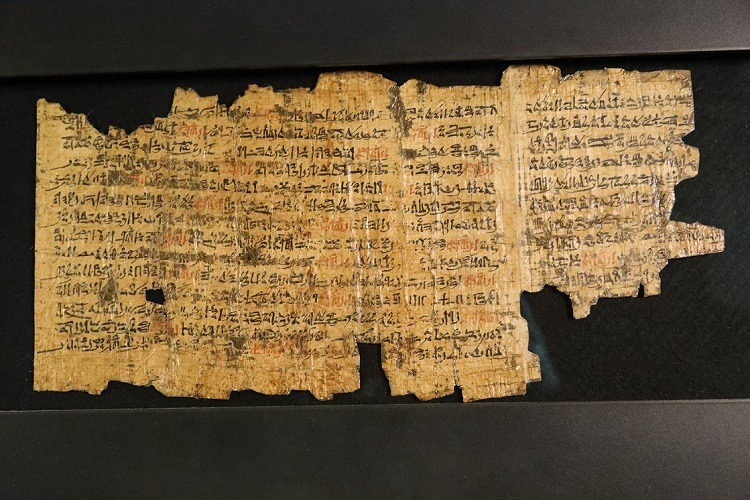

On the other hand, a controversial, yet intriguing, interpretation of this text was proposed by Dr. Lange, who maintains that it lacks prophetic evidence in its text. Gardiner’s interpretation of the message in the papyrus differs from that of Dr. I conclusion, it is suggested that the book may have had an historical background, and that the writer had possibly in his mind some such political situation as that of the troublous times which preceded the rise of the twelfth dynasty”.Īccording to Gardiner’s opinion, “if we may venture to extract the essence of Ipuwer’s discourse, we shall find that the things which he thought to conduce to the happily-constituted state are three: a patriotic attitude in resisting foes from within and from without piety towards the gods and the guiding hand of a wise and energetic ruler”.
IPUWER PAPYRUS ONLINE TRANSLATION PDF FULL
Lange, are prophetic in character an era of disasters is predicted for Egypt, and is even now, as one passage declares, at hand and it is the king himself who is responsible for the calamities the bitterness of which he is soon to taste in full measure. “It must have explained the circumstances under which the chief personage named, one ‘Ipw’ or ‘Opw-wr’, came forward to hold a long and impassioned harangue in the presence of the king and his people. Lange, who believes the Ipuwer papyrus contains prophetic utterances of an Egyptian seer, as Alan Gardiner relates: Many scholars support the theory proposed by Dr.

Lange, evidence does validate the idea that the Ipuwer papyrus was written during the Middle Kingdom, as the language style and vocabulary corresponds to those used during that era. The nature of the message in the Ipuwer papyrus depicts violence and chaos in Egypt. Although this papyrus was brought out of its hidden place in 1828, it was not until 1909 that Alan Gardiner challenged the document and began studying its content.

The Ipuwer papyrus is famous among Egyptologists, who have known about its existence for a long time, but many were discouraged to engage in further studies of this document due to its complicated language, damaged conditions, and many missing pieces which were crucial to its complete comprehension. The back of the papyrus contains hymns to the god Amun but it suffered substantially more damage, causing a larger detrimental effect on its preservation and, therefore, loosing much of its written content.ĭepiction of Amun in a relief at Karnak ( Public Domain ) It consists of 17 complete and incomplete columns of writing. The papyrus is fully inscribed from beginning to end on both sides. It is currently housed at the National Archaeological Museum in Leiden, Netherlands. It was in possession of the Greek diplomat and merchant Yianni Anastasiou who claimed that the papyrus was discovered at Memphis, in the Saqqara region. The origin of acquisition regarding this document is obscure. Written in a single papyrus, the Admonitions of Ipuwer, (catalogue name Papyrus Leiden 344) is a poetic composition believed to have been written during the Egyptian Middle Kingdom era, a period corresponding to 2050 BC - 1652 BC. Neither the beginning nor end of this work was preserved, leaving historians with difficulty in interpreting the material and reaching a final conclusion about the events it describes. The Ipuwer papyrus, also known as the ‘Admonitions of Ipuwer’, is a controversial text that describes starvation, drought, death, and violent upheavals in ancient Egypt, with some maintaining that it is an eyewitness account of the Exodus plagues.


 0 kommentar(er)
0 kommentar(er)
